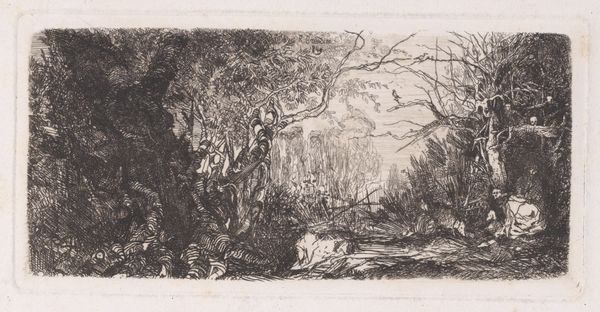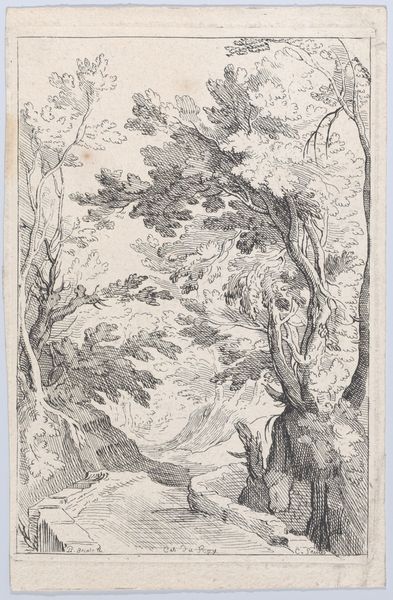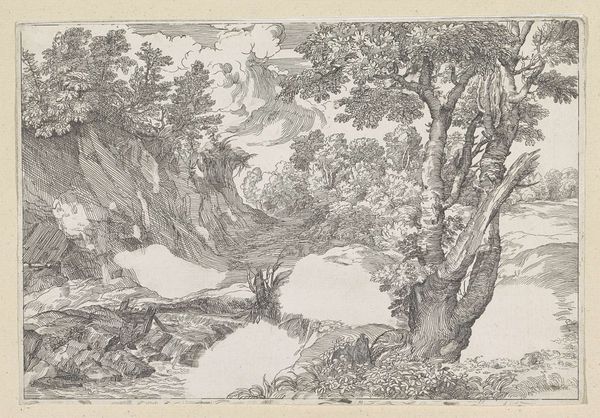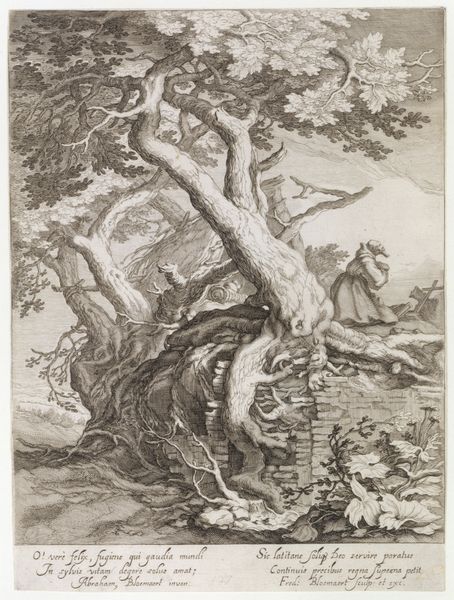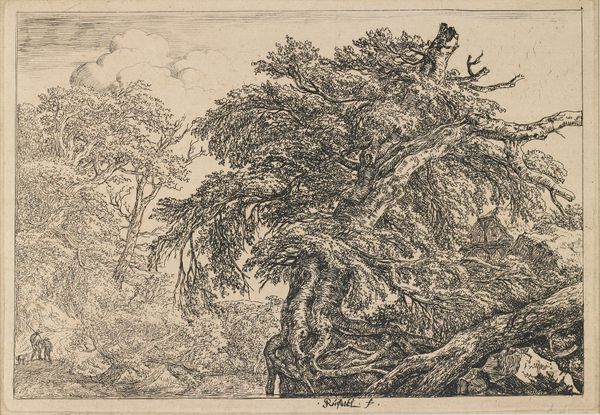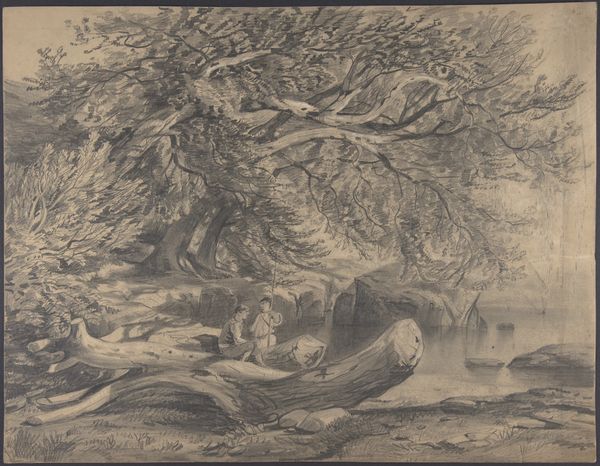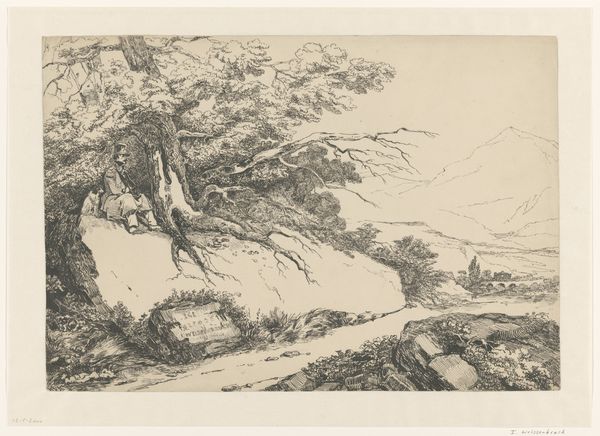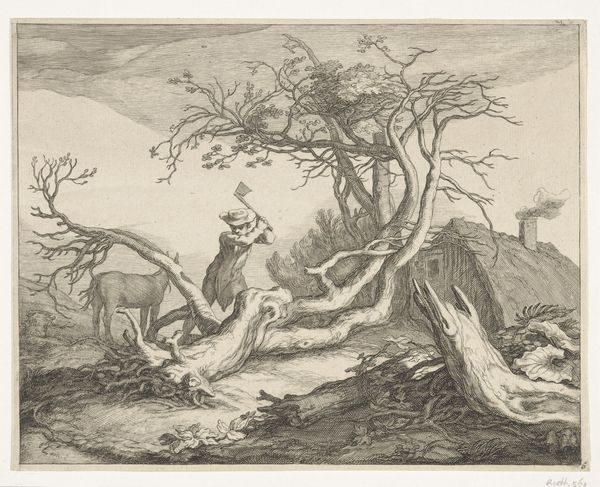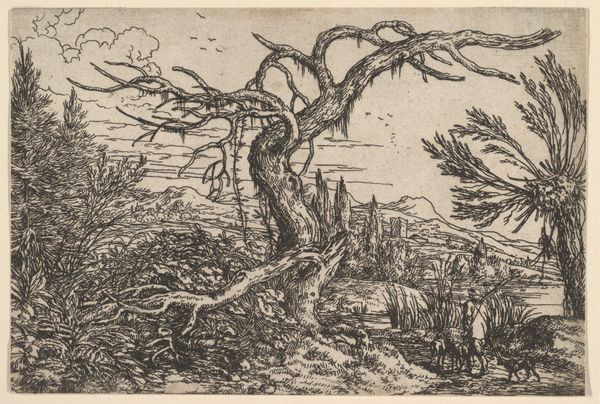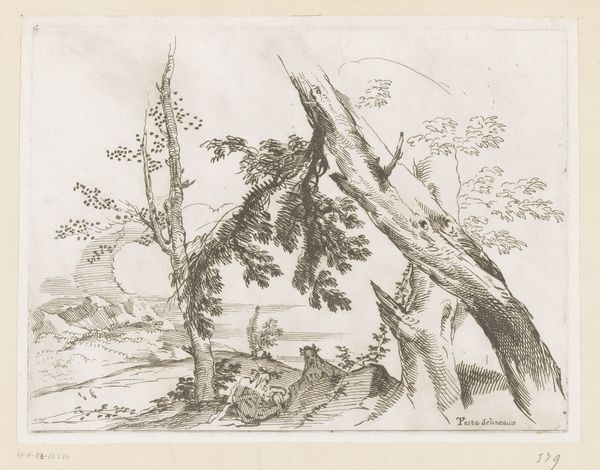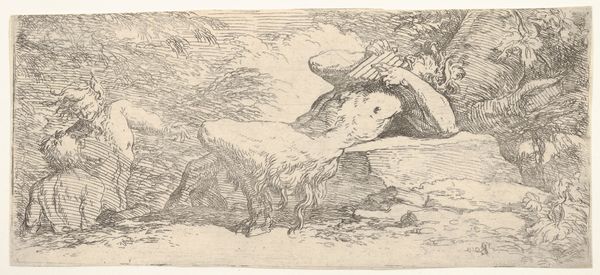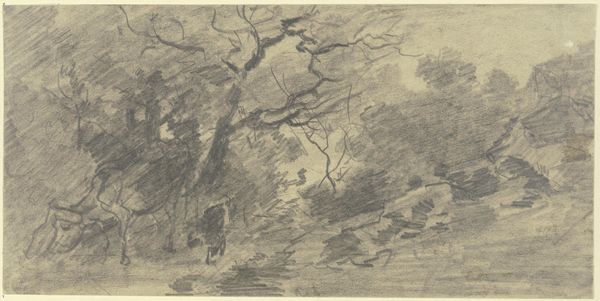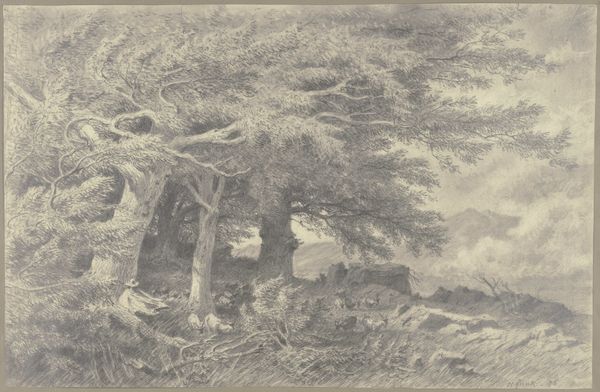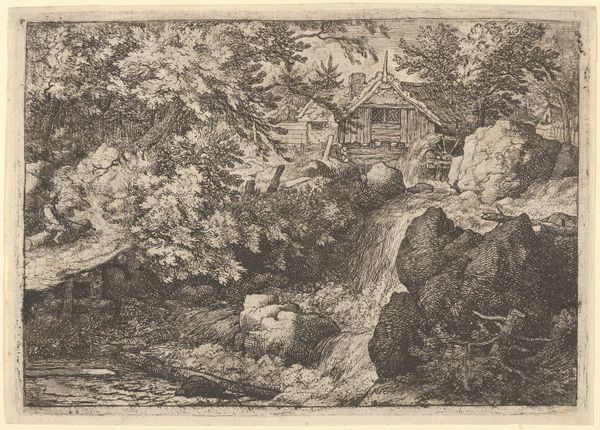
etching
#
baroque
#
etching
#
old engraving style
#
landscape
#
figuration
Dimensions: height 95 mm, width 155 mm
Copyright: Rijks Museum: Open Domain
Frederick Bloemaert etched this landscape with trees, populating it with figures, during the 17th century. Dominating the scene is a large tree, a motif stretching back to antiquity, symbolizing life, growth, and connection between the earthly and divine realms. This ancient symbol has been interpreted in countless ways. In classical mythology, trees were sacred to various gods and goddesses and were often seen as embodiments of deities or as places of communication with the divine. Observe how Bloemaert positions the tree as a central, almost anthropomorphic figure, around which human activities unfold. This recalls the medieval Tree of Life or Tree of Knowledge, laden with symbolic weight. We see this motif echoed through art history. In ancient Egypt, the sycamore was seen as a maternal symbol, offering nourishment. In Norse mythology, Yggdrasil connects multiple worlds. Such recurring symbols demonstrate the enduring power of collective memory. Our interpretation is invariably intertwined with the emotional resonance these archetypes evoke. The tree, in its silent presence, engages us on a deeply subconscious level, reminding us of nature’s cyclical patterns and humanity's ongoing dialogue with the natural world.
Comments
No comments
Be the first to comment and join the conversation on the ultimate creative platform.
